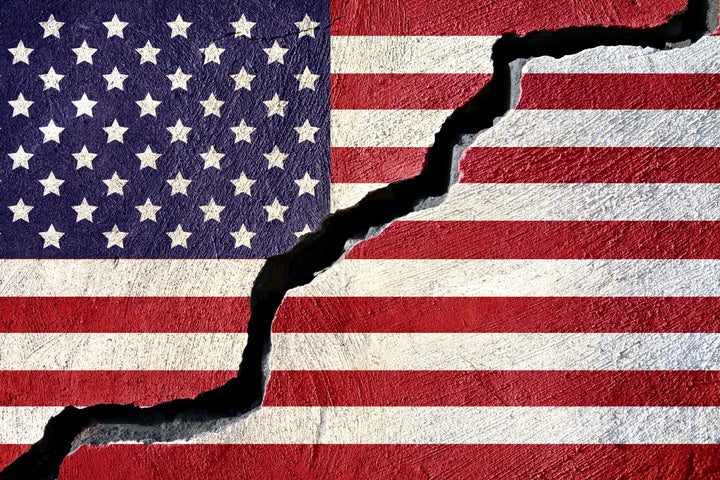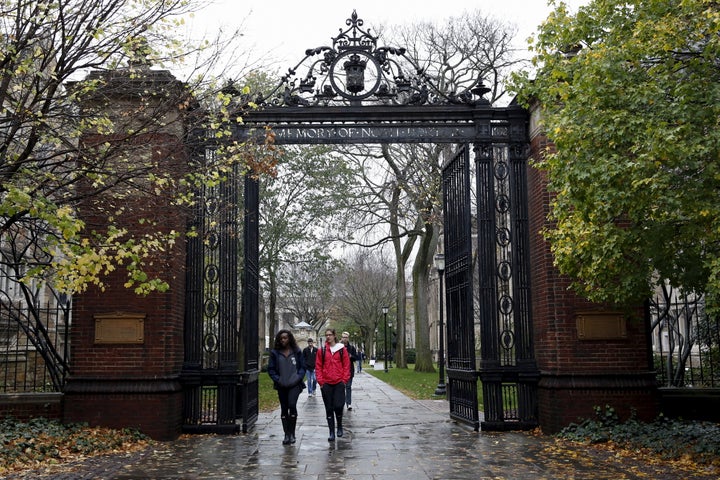
The heart of the American dream is that anyone with grit can rise. Instead, our increasingly ossified class system dictates life outcomes with depressing consistency. America is choking its future.
Proof? Start with Matthew Stewart’s compelling study in The Atlantic. It’s not simply the top .1 percent, Stewart shows, that’s monopolizing prosperity. The next 9.9 percent is perpetuating a class structure which monopolizes success.
This nouveau-aristocracy espouses meritocracy. But it’s vesting its children with a privileged access to the ingredients of well-being ― superior health care; elite education; a network of societal gatekeepers; influence over governmental decision-making; and the accumulation and preservation of wealth. Says Stewart: “We are the principal accomplices in a process that is slowly strangling the economy, destabilizing American politics, and eroding democracy.”
Granted, the top .1 percent are the overlords in a massive wealth transfer. But the next 9.9 percent own substantially more wealth than the top .1 percent and the bottom 90 percent. These are the doctors, lawyers, executives and dispensers of financial services whose median worth ― $2.4 million ― is unimaginable for those below. Unsurprisingly, they are significantly whiter than the total U.S. population.
Meanwhile, nine of every 10 Americans lose ground with increasing celerity. This creates a virtually unbridgeable moat which is even wider for minorities.
This chasm disproportionately dictates outcomes. Statistics show that, as Stewart notes, “In America, the game is half over once you’ve selected your parents.” While some mobility remains within the middle rungs, the top and bottom 10 percent are the most likely to end up where they’re born.
Thus the top 10 percent is becoming its own species ― just as the rich in 19th century England averaged nearly 9 inches taller than the undernourished lower class. These contemporary patricians are not only richer in wealth, but in social capital ― stable families, affluent friends, influential networks, superior health, elite education and homes in privileged enclaves. In this happy bubble, its members inter-marry ― and are much more likely to form lasting families. Writes Stewart:
In America today, the single best predictor of whether an individual will get married, stay married, pursue advanced education, live in a good neighborhood, have an extensive social network, and experience good health is the performance of [their] parents on those same metrics.
Take access to elite education. The top 10 percent can afford private secondary schools, private college counselors and SAT coaches, and tuition at private colleges. Often they benefit from elite affirmative action ― legacy admissions. While only 2 percent of America’s students graduate from nonsectarian private high schools, they comprise 26 percent of students at Harvard University and 28 percent at Princeton. In a 2017 study, 38 top-tier colleges had more students from the top 1 percent than from the bottom 60 percent.
As Stewart demonstrates, after college ― and, likely, graduate school ― this privileged cadre far surpasses other college graduates. According to the Department of Education, 10 years after they had started college, the top 10 percent of earners from all schools had a median salary of $68,000. But the median salary for the top 10 percent from the 10 colleges with the highest earners was $220,000; for the top 10 percent from next 30 colleges, it was $157,000.

In America, elite education is the gateway to elite professions. Well over half of Ivy League graduates enter the preserves of the highly educated: finance, management consulting, medicine or law.
Generally, these folks then congregate in affluent residential enclaves ― often in expensive cities or suburbs ― that reinforce de facto economic and racial segregation. If you own a home in San Francisco, New York, Boston, Los Angeles or Washington, you benefit from exponentially escalating property values. If you rent in those cities, you’re screwed. So you leave.
Too bad. Privileged zip codes mean shorter commutes, higher life expectancy, stronger social networks, lower crime rates and better public schools. But only if you can afford to buy there.
Once ensconced, it becomes easier to forget about those who aren’t. In The New York Times, Thomas Edsall recently described a research experiment conducted in affluent Boston suburbs. The researcher measured the residents’ social attitudes before ― and after ― briefly inserting two Spanish-speaking strangers in train stations. Thus exposed to “the other,” the newly unsettled commuters expressed more hostile attitudes toward immigrants. While melancholy, this is less surprising when one considers the oft-noted tendency of elite neighborhoods to oppose affordable housing.
Armed with money and social capital, 10 percenters can bend government to their economic ends. We see this in upper-income tax cuts; vanishing estate taxes; deductions for retirement savings and mortgage payments; favored treatment for earnings and appreciation from investments. But it also enables them to thwart housing programs which might provide upward mobility for others.
Too often, such uncomfortable truths are buried in self-narcotizing myth. It becomes easier for 10 percenters to believe that they ― and their children ― succeed on merit alone, or to mistake their insular status anxieties for the existential struggles of those below them. The unreflective feel both needlessly superior and unreasonably vulnerable.
Corporate consolidation exacerbates this alienation. In the era of the mega-merger, profits rise, wages stagnate and income inequality increases. Corporate policies enrich shareholders while bypassing workers ― the corporate windfall from recent tax cuts went disproportionately into stock buybacks instead of increased wages.
Technology further bifurcates society. A privileged segment of America profits ― directly or derivatively ― from innovations which kill other people’s jobs. This helps concentrate economic and political power in the fortunate few ― who then exploit our corrupt campaign finance system to purchase public policy.
Meanwhile, the middle class struggles and the poor suffer. Less-educated whites increasingly suffer death by class ― suicide, substance abuse or neglected health. Among African-Americans writ large, wealth accumulation continues to be paltry. Satisfaction with life is rising among the affluent, declining among those beneath. One obvious cause is the pervasive sense of falling behind.
“These policy gaps can all be overcome by those with the means, but loom as crippling obstacles for those already struggling.”
Particularly lethal for America’s future, too many children of the 90 percent aren’t getting what they need. Compared to other Western countries, the U.S. has shockingly high rates of child poverty, homelessness, violence and ill health. Our rate of maternal death in childbirth has increased dramatically since 1990; three times more black women than whites die giving birth. Our infant death rate is twice that of comparable countries, and child poverty is far higher than among our peer nations.
Unlike other countries, America does not mandate maternity, parental or homecare leave. We spend much less on early childhood programs ― depressing the workforce participation of U.S. mothers. Nor do we have anything close to universal health insurance coverage.
These policy gaps can all be overcome by those with the means, but loom as crippling obstacles for those already struggling. The escalating inequality breeds a politics of resentment ― sometimes directed by members of the 90 percent against each other; sometimes directed upwards. Donald Trump’s presidential candidacy exacerbated this divide.
Where is suffocation by class taking America? Nowhere good.
This is not a blanket condemnation of the 10 percent, or sanctification of the bottom 90 percent. It’s a plea for all of us to care about other people and their children before our democracy perishes in a rancorous Hobbesian state of nature which obliterates comity and reason.
That means comprehensively rethinking our social policies to benefit every American. Such as:
― Curbing monopoly power. Protecting consumers. Encouraging higher wages. Passing a meaningful earned income tax credit. Restoring equity between businesses and unions. Rebuilding our nationwide infrastructure.
― Prioritizing K-12 education while rewarding approaches that raise outcomes. Educating and training people for the new economy. Assuring affordable college and student debt relief. Democratizing college admissions by rewarding merit across economic and racial lines.
― Instituting a more progressive tax system. Providing comprehensive care for children, support for working families, and access to universal health care. Treating substance abuse. Constructing a stronger social safety net for Americans of all ages.
― Combating racial and economic segregation in housing. Attacking gender and racial discrimination in the workplace. Preserving and expanding voting rights. Reforming our criminal and juvenile justice systems. Bringing economic development to stagnant regions and communities.
― And doing whatever we can to reform a campaign system that helps prevents these things from happening.
To some, all of this may sound radical. So did the New Deal. That wasn’t; this isn’t. It preserves our democracy and economic system against plutocracy, authoritarianism and corrosive strife. If history teaches us anything, it’s this: In the end, no society does better when a majority does worse.
Richard North Patterson is the New York Times best-selling author of 22 novels, a former chairman of Common Cause and a member of the Council on Foreign Relations.
